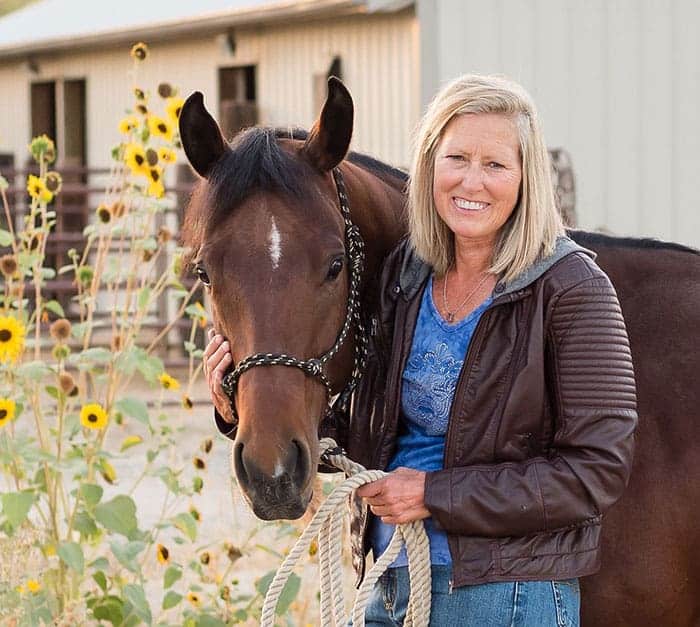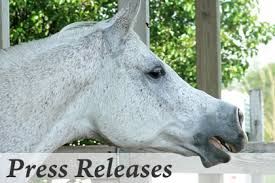Spring Cleaning Tips: Getting Ready for the Growing Season
- Posted by Alayne Blickle

Spring is just around the corner and in some parts of the country daffodils are poking their heads up and may even be blooming. That means now is the time to get things done around your horse property so you will be ready for the upcoming busy growing season. Here are a few tips to get you started:
Get your violet-green swallow boxes, and other nest boxes, ready!
In the Pacific Northwest we love our violet-greens — they are beautiful and fun to watch, and they’re voracious insect eaters, consuming about 4,000 insects per day, per bird! Mid-March is when faithful insect controllers begin returning from Central America to North America and start house shopping. Swallows eat flying insects and there’s a species native to just about every part of North America. Many are secondary cavity-dwellers, requiring a hole built by someone else as a nesting spot. Clean out last year’s nest boxes by simply opening the trap door and cleaning out the contents. If you don’t have any nest boxes hung yet, now’s the time to do it — violet-greens and their cousins will want to spend their spring and summer hunting insects on your farm! Remember: You must use nest boxes designed for your specific bird. Horses for Clean Water has a tip sheet, The Swallows Are Coming, with directions and nest box plans, that you can find on the website, horsesforcleanwater.com. Or, check out The Original Birdhouse Book, by Don McNeil.
Add compost to gardens.
The manure and stall waste that you have been composting over the winter should be just about ready to rototill into your garden or share with your neighborhood gardening friends. You might want to check it if you haven’t already. It may need to be turned or have aeration pipes put into it to help finish it off before you spread or move it to your garden. Compost is an excellent soil amendment that adds organic material, important microbial life and micro-nutrients to gardens and pastures.
Tune-up your manure spreader.
Take a look at your manure/compost spreader to see if it needs any tune-up work done. You may need to oil or grease a few parts before putting it into action. The drive mechanism or beater bar gears could probably use some attention. Check air in the tires and see if you need to grease the bearings or PTO shaft and couplings. It is always good to check these things out now because when you’re ready to start spreading you don’t want spend half the day fixing things before starting the real work (speaking from experience!)
Tune-up your tractor.
Even if you have been using your tractor all winter long, it is still a good idea to give it the once over at the beginning of the growing/ mowing/ spreading season. So what if your tractor is only a supped-up riding lawn mower? It will still need some basic, annual maintenance such as an oil change, check/change the fuel and air filters, grease all the fittings and check those tires. While you’re checking over the tractor also check your mower deck and any other implements you use on your property. Taking care of these things all at once is a good idea so you don’t end up stopping to fix something when you’ve just started mowing or spreading (and so you don’t have to hear “I told you so.”)
Do a soil test.
Spring is a good time to do a soil test before you spread any fertilizer and/or lime, especially if you haven’t done a soil test in a while. The soil test will tell you exactly what your grass plants and soil need in the way of nutrients. It’s like using the dipstick in your car; if you don’t check the level first you could be doing more damage than good. If you simply add fertilizer you may not need it and it will wash away with the next rain, possibly contaminating ground or surface water. (However, if you prefer to waste your money, then just send me the cash you’d be spending on the fertilizer and save yourself the trouble of buying and spreading it.) A soil test is a cheap way to find out just what your soils and plants need (they usually cost less than $25). Contact your local conservation district or extension office for a soil test kit or information on how to get one.
Walk fence lines.
Depending on the layout of your property, you’re probably not able to see all of the fencing from one location. And if you’ve been keeping your animals off the pastures for the winter, chances are you may taken a good look at things in the pasture for a while. Now is a great time to do a close inspection of your entire fence line. Weeds, tree branches (or the entire tree, for that matter), wildlife (a.k.a. elk and deer) may have taken a toll on fencing during the winter months. Before soils starts to dry out and you are ready to begin using pastures, walk the fence line to see what repairs or clean-up are needed. You’ll be glad you did it now instead of waiting for your neighbor to bring over your horse after it has torn through his newly planted garden. Don’t forget to test hot wire to be sure it’s still working.
Check pastures for weeds and bare spots.
While you’re out in your pastures, take a little time to look for weeds that may be creeping in. Weeds often green up before grass plants so it should be easy to spot them and early spring is a good time to attack young weeds. This is also a good time to look for bare spots and spread grass seed before weeds move in.
What are your spring cleaning goals?
Alayne

Written by:
Alayne Blickle
Related Articles
Stay on top of the most recent Horse Health news with












